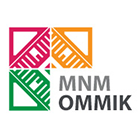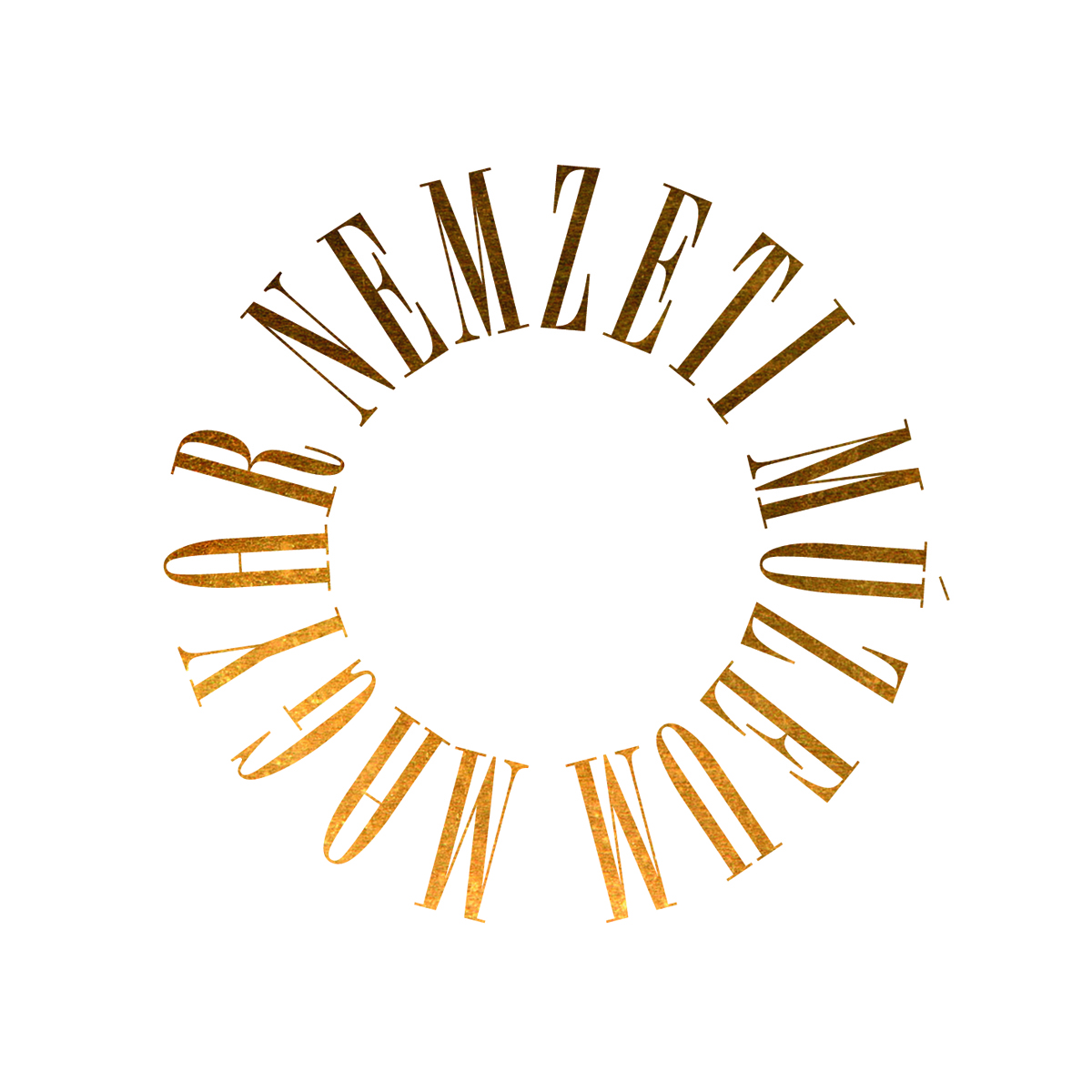MUZEUM@DIGIT 2017 presentations
Zsolt Bánki - Ildikó Sz. Fejes: Digital society - museum digitization. Museum opportunities in the mirror of KDS
Our fast-paced world, today's digital society brings new challenges to museums. In addition to the traditional approaches to access to analogue, fixed - often unique cultural heritage content - new, previously unknown channels of communication and content are available to the institutions. The information society has created the technology conditionality and approaches in museums, through which isolated collections of databases have been opened up to digital content services, creating the possibility of cultural inclusion independent of space and time. In June 2017, the Hungarian Government adopted the Digital Collection Strategy for the Public Library, defining the digitization priorities of the coming years in the museum sector as well. The strategy is a great opportunity for museum institutions to speed up the production and publishing of their digital content. The process is supported by sectoral professional ideas based on knowledge of the current situation and supporting the achievement of the objectives of the strategy.
Éva Kómár: The renewal of the MuseuMap aggregation service in line with the Public Collection Digitalisation Strategy
The MuseuMap service was started in 2015 as a pilot program by the Hungarian National Museum National Centre of Museological Methodology and Information (OMMIK). The goal of this project is to collect Hungarian digital cultural heritage content, and make it available and researchable for librarians and museologists and for the public as well, on the MuseuMap portal. Reflecting to the digital world specific, constantly changing user needs and the principles of the National Digitalization Strategy of Public Collections, accepted this year, the OMMIK developed a strategy for speeding up the content collection, making the publication more effective and renew the portal interface. It is a seeded task for OMMIK to provide the digital content of the Hungarian museums as education materials in the formal and non-formal training environment, as well.
Dr. László Tokai: Data management of national assets in cloud solutions
The analysis and the structure of the contractual arrangement of data protection, data handling, data storage, data transmission and data processing risks arising out of the use by entities of management of assets of national cultural heritage of cloud computing services shall be materially determined by the data processing requirements to be observed in connection with data pertaining to the items of national assets, which requirements demand that the user of the cloud computing services exercise a heightened level of care in the course of providing for the terms of such services.
János Káldos: Digitization plans of the National Széchényi Library and the Digital Strategy of Heritage Institutions
Digitization works have been in process since 2000, but with the help of a government decree from last year we have the opportunity for the innovation of digitization and digital services. The digital strategy of the National Széchényi Library has been created related to the Digital Strategy of Heritage Institutions and the service strategy is underway, as well. In the presentation the main goals of the digitization and service strategy, the main tasks and the present situation will be presented. Furthermore the speaker will talk about the digitization strategy of Hungarian libraries related to the Digital Strategy of Heritage Institutions and the possible model of library aggregation.
Zoltán Szatucsek: The digitalization strategy of the National Archives of Hungary
Given the uniqueness of their records and holdings, the unlimited communication of digital copies is an unprecedented opportunity for the archives. Although the digitization strategy adopted by the Hungarian National Archives in 2015 has not received much publicity, in the lack of similar documents in the field, the National Digitalization Strategy of Public Collections has put it into the spotlight. The strategy was published three years after the integration of public archives, based on the experience of the experiences of the first decade, to create order in this new and dynamically developing field. It brings the activities into line with European and national government strategies and sets realistic targets regarding our financial resources. Including guidance on the selection and alignment of internal processes, the strategy puts a particular emphasis on aspects like the long-term preservation and standard based publication. The presentation also highlights the issues to be solved, difficulties and deadlocks, in order to help memory institutions with our experiences.
Júlia Katona: Europeana – an integration alternative for Hungarian collections
Europeana, whose mission is to make European cultural heritage known and accessible as much as possible, has gone through a remarkable transformation in the past years. The biggest European aggregation portal has moved from “quantitative” content service towards “qualitative” online publication where the creative re-use of digital content has priority and the valorization of the segments of cultural heritage runs on a number of strands. How does this work? What kind of tools are used? How can Hungarian public collections latch on to the publication process which is already in the second phasis? The presentation will also summarize the speaker’s narrow first year as a counsellor in Europeana Members Council.
Elżbieta Wysocka: Film archive’s and new media collections in art museums
In most institutions collecting new media art, the absence of a proper tool, made it necessary to define a new comprehensive model of documentation and create an adequate software, which would allow one to describe complex time-based media objects. If smartly developed, a Collection Manager’s interface may represent a media artwork life cycle and can provide a structured way to contextualise descriptions, and allow one to establish criteria for cataloguing, taking into account all the individual characteristics of the object and to generate useful and contextualised conservation documentation for better protection of the authenticity and integrity of art objects. The presentation will share experience from these two worlds: film archive’s and new media collections in art museums, on how we may use these computer programs to build a single coherent workflow.
Lipót Répászky: The role of community in preserving audiovisual heritage in the long term
Audiovisual archives looks back on decades of history. Over the past period they have undergone a major transformation since classic physical storage of media (film / tape) based archives are beginning to get effaced and a lot of content is digitally available, while digital archives (TV archives) are forced to make continuous conversion steps to enlarge storage, transcoding and processing capacities. Because of the lack of competence in audiovisual technologies and the high number of produced content there is a need for different institutions (schools, small regional TV channels, museums, libraries) to put their own content in archives. If a well-organized, unified model works, the existence of the community archive becomes relevant since communities are developing and administrating their own collections if a proper platform is available for that.
György Ráduly: Film archives and preservation
One of the basic tasks of the Hungarian National Filmarchive is to preserve the Hungarian film heritage on the long term. Celluloid films have survived through 120 years but they definitely won’t last for another 120 years, and we’re running out of time as these materials are dissolving, and we can only slow the process down. Digital data mediums are yet to prove their 120 years but nowadays there is no better alternative for digitization to save and maintain the film heritage.
Antonio Rodríguez: Exhibitions without borders: transcendig boundaries through media and technology
Today, museums are looking into new developments in media & technology as a way to provide global access to collections and exhibitions. From online galleries and virtual tours to mobile technology and smartphone apps, museums are making exhibition content (texts, images, audios, videos) available to new and diverse audiences. At the same time, the interdisciplinary dialogue between art, science and technology creates multiple opportunities for museums to enhance visitor’s experiences through innovative and creative ways, resulting in more powerful and effective exhibitions.
Rutger Rozendal: MuPop Museum
Only having digital objects accessible online does not guarantee visitors a cultural experience comparable with a physical visit to a museum. For a real cultural experience, we need to move the digital objects back into a physical museum-like context. The Pop-Up Museum is a low-cost, easy to set up system designed in such a way that cultural institutions can easily build an interactive exhibition themselves. These Pop-Up exhibitions can be placed anywhere, to visitors at museums and art galleries, but also at locations such as waiting rooms, entrance halls, offices and classrooms.
Hajnalka Tarr: Artworks of young autistic artists in virtual reality - Digitizing and publishing exhibitions online
The Autistic Art Foundation has started its autism specific art program in 2010. In the program autistic youngsters living in charity homes can create their own art. The drawings of autistic people has numerous characteristics like seriality, attraction to systems and geometric tendencies that have an exciting connection to contemporary art. The foundation’s latest exhibition is based on this connection: 39 contemporary artists’ and 8 autistic artists’ artworks have been exhibited in the Contemporary Art Institution in Dunaújváros and in the Szent István Király Múzeum in Székesfehérvár in the frame of “Autism like metaphor” exhibition. The content of the exhibition has been digitized and can be visited with a special virtual reality set. Meeting autism in the virtual reality is quite a remarkable connection as autism itself is a special virtual reality with its own closeness and isolated inner world.
Walter's Cube makes it possible for museums and institution to publish their exhibitions online. The technology provides the best experience if the visitor cannot see the exhibition physically. The digital exhibition can be viewed on mobile, desktop or VR devices. Walter’s Cube has developed a photo based technology for galleries and museums that makes the digitizitaion and online publishing of the exhibition experience possible. The presentation introduces the technology and the process with a certain exhibition’s point of view.
Hadzijanisz Konsztantinosz - Zsolt Mráv: 3D Documentation of the Seuso Treasure – Methods and Strategies
The paper presents the methods and strategies we followed while creating the 3D digital documentation of the objects of the Seuso Treasure. As a collaboration with the Hungarian National Museum and the Museum of Fine Arts we started the work in 2016 when we had the possibility to digitize the then available 8 objects along with the Kőszárhegy silver stand. This year we continue this work, digitizing the newly available seven silver objects. The aim of our work is to create high quality digital 3D models, which let researchers to analyse not only the objects themselves but also the techniques presumably used in the manufacturing process.
Cristiano Bianchi: Museum information management systems
The typical museum owns between one and ten different software ‘systems’ to manage and publish its digital content, with each solution designed to solve a single problem, within the institutional digital landscape. Collections management systems, archive and library management, websites, shops, etc. are all considered as completely independent and self-contained clusters, with none or little communication and exchanges between each other. Data needs to be replicated between different systems and databases and gets quickly out-of-date somewhere down the line, while efforts and costs to integrate different systems increase with each new component. Museums need to start changing their traditional museum perspective, which consists of procuring and purchasing a series of independent and vertical ‘something’ management systems, towards the notion of a framework for integration of information into more holistic digital landscape.
Ildikó Sz. Fejes: MuzeumStat. More than just statistics
In 2012, we decided to build a unique service that stores diverse information about museums in a single system: annual statistics, data describing the institutional system, data on EU developments and municipal environmental statistics. We thought it would be a relatively simple task. But we were wrong. Over the years we have been facing ever more complicated problems, that is, creating coherence between data demands a lot of human work. While there are only tables containing figures, so many figures are difficult to understand and comprehend, so we have created a visualization interface; the MuzeumStat portal. Data visualization has caused further problems: not yet detectable data reporting anomalies, difficulties in data interruption due to the continuous change in the institutional system. We are continously working on the solutions, we are sure of one thing: decisions are affected museums are often based on statistical data which we give on ourselves.
Gergely Kecskeméti – Dávid Rózsa: In the footsteps of museums: modernisation of the national library statistics data collection system
The need for modernisation of the content and dissemination of library statistics has been a concern for many years by librarians. One remarkable example may be the museum statistics system presented last year. This paper expounds the – mostly service-oriented and partially approved – proposals essential for presenting the activity and performance of public and specialised libraries in the 21st century.
Simone Stoltz: Media education in heritage
Heritage institutions have an impressive track record when it comes to the use of media. As transmitters and receivers of information in various shapes, heritage institutions themselves are seen as a medium. The technological innovations that are changing the way we work and live demand new skills of the people managing it. This requires for heritage institutions to take on a new attitude towards their proposition and their audience communication. When teaching media in heritage it’s often a generational difference that disrupts the vision on the digital strategy. This reflects strongly on the training of the future heritage professional and the skills or competences that are needed. A new curriculum is needed to meet the future heritage professionals - at least half way.
András Micsik: The COURAGE projekt
The COURAGE project is exploring the methods for cultural opposition in the socialist era (cca. 1950-1990). We are building a database of historic collections, persons, groups, events and sample collection items using a fully Linked Data solution with data stored in an RDF triple store. The result is what we can call a knowledge graph connecting collections, events and participants of cultural opposition. Part of this graph is already published and browseable on the project portal.
László Drótos - Márton Németh: Web-museum, web-library, web-archives: responsibility of memory institutions in the preservation of the digital culture
There is no established system in Hungary to preserve the ever-changing and eroding born-digital culture. This task has not been built into the activities of memory institutions just as the analogue and digitized objects are being treated. However, since the end of the 20th century, neither the history of social processes, nor the history of individuals or institutions can be written without the availability to research of their past internet presence. The presentation draws attention to this task relating to a web archiving project launched at the National Széchényi Library.





